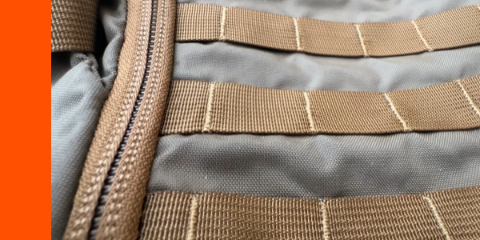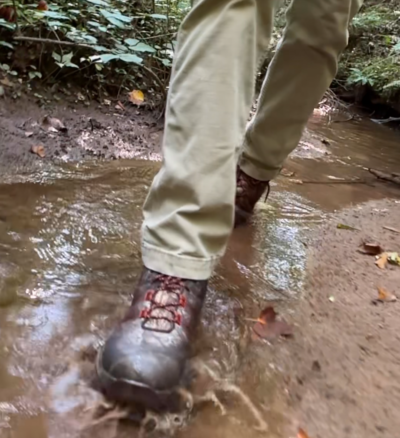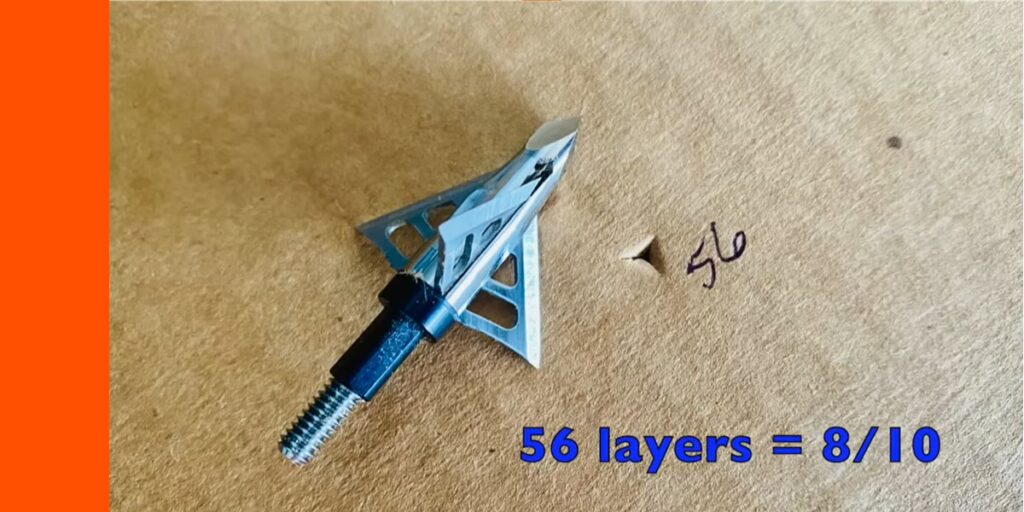Is the Kifaru Shape Charge backpack worth all the hype (and the price)?
It certainly carries a hefty price tag, that’s for sure. But, you know the saying, “you get what you pay for.” Well, we wanted to find out if it was indeed worth the cost of admission… so let’s dive right in to what we learned!
Kifaru Shape Charge Backpack Up Close

This is how the Shape Charge came right out of the package.
Many backpack hunters will ask right away, “so how much does it weigh? Well, the Shape Charge weighs right at 4 pounds. Obviously, it packs up pretty tightly, but we wanted to take a closer look and see what it looks like inside and what kind of advantages it has for the backpack hunter, saddle hunter, or anyone that needs to carry their gear into the woods or mountains with them.
The Outside Of The Pack

So, the first thing we noticed about the Shape Charge is that it’s just so well-put together. It feels so high quality. Everything about it, the stitching on the MOLLE webbing to the quality of the zippers and other materials… everything was just very high quality. So, that was a huge plus right off the bat.

There were also many little details that were also pretty impressive. It looks like they just thought of everything. It comes with stout, high quality zippers and handle material (shown here), with every stitch being meticulously sewn. It was evident that superior quality is paramount with Kifaru’s offerings. And, we hadn’t even gotten to the inside of the pack yet!
One thing we appreciate in hunting equipment, whether it be a deer stand, or archery equipment, or a backpack, is just the attention to detail. And we could tell right off the bat that not only has Kifaru put a lot of thought and effort into creating this backpack, but they’ve used high quality components and materials. Everything from the stitching on the MOLLE webbing to the material that they make the handles out of — everything is very high quality.
-
“Edge of the Outdoors™” Tee featuring Tuffhead Evolution Broadhead (Various)
Price range: $24.99 through $28.99 -
Just Pass’N Through™ Tee featuring Iron Will (Various Colors)
Price range: $24.99 through $28.99 -
Just Pass’N Through™ Tee (featuring Magnus Black Hornet Ser-Razor Broadhead)
$15.00

Kifaru thought of everything… even way to tuck under the zippers!

It’s got a handle on both ends, both very well-constructed, from solid material.

Also, on the external part of the waist trap, you’ve also got four rows (two on each strap) of 5-section MOLLE webbing, which gives you more options to attach gear or other pouches.

The Shape Charge backpack has an internal 18-inch sheet frame, which gives you the ability to carry a good amount of gear without committing to a full framed pack.

The lid has some zippered pockets. This one on top has a key hook.

It’s also got a large center pocket with three slots, made of 4-way stretch tweave with elastic reinforcement.

The lid will continue to zip all the way around and down to make it a full top and front-loading pack with zippers at the bottom on each side.

The front panel of the backpack has 8 rows by 4 channels of the MOLLE webbing.

It’s also got two outer pockets for holding water bottles or spotting scopes.
#ad

Here’s a look at the breathable, padded back material. This pack comes in a small, medium, and large. The small is for a 28 to 33-inch waist, the medium is 34 to 38 inches, and the large is a 39 plus inches.
Inside The Pack
The Shape Charge is a 2,050 cubic inch pack.

It has some nice, mesh pockets on the inside.

You’ve also got 8 rows of 8 channels of MOLLE webbing. It has also got a bladder-hanging tab and also a chamber pocket connection point.
Tired of boring arrow shafts? Check out ALL the N-Tune Arrow Wraps!
-
N1 Outdoors® N-Tune™ Nock Tuning Reflective Arrow Wraps – Topo Lines (Various)
Price range: $18.99 through $27.99 -
N1 Outdoors® N-Tune™ Nock Tuning Reflective Arrow Wraps – Camo Fade (Various)
Price range: $18.99 through $27.99 -
N1 Outdoors® N-Tune™ Nock Tuning Reflective Arrow Wraps – Smoke (Various)
Price range: $18.99 through $27.99
Kifaru Shape Charge Size Chart

Experimenting With The Shape Charge
Now, I know we’ve got a lot of you saddle hunters out there, and this pack is used by a lot of saddle hunters. However, there are those who only hunt with climbing stands or use lock-ons/hang-on stands. So, we wanted to do is I wanted to see if this pack could handle a heavier setup.

We took an XPO Air Raid lock-on that we had and some Hawk Helium steps and strapped them the back of the Shape Charge to see if it could handle a heavier load and to see how it felt when wearing it.
After walking out in the woods for a little while with the Shape Charge backpack on with a lock-on stand and some steps (around 30 pounds total), we learned some things. The shaped molded insert in the back of the Shape Charge really does keep the weight off of your lower back and it keeps the pack from sliding down. That is definitely a plus.
This would make the Shape Charge very beneficial, even in the pre-season, for those hanging lock-ons, as it would give them the ability to strap on the stand and the steps and have both hands free.
#ad
Final Thoughts On Kifaru Shape Charge Backpack
We absolutely love this backpack for hunting. You could tell that the folks at Kifaru put a lot of time and effort into thinking through not only what the hunter needs in the field, but also the overall quality, from the stitching, to the components and materials. Everything is crafted in a top-notch manner.
We are confident saddle hunters will appreciate this pack, but, if you’re someone who hangs stands before the season, it’s a great way to not only strap on your lock-on and your steps, but also have your hands free. And, we know from testing it that it can handle the weight of that and still stay off of your back, due to the molded insert inside of the backpack.
Happy and safe hunting!














































